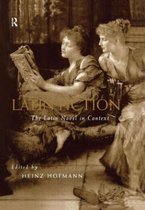The Novel of Neronian Rome and its Multimedial Transformations Sienkiewicz's Quo vadis
Afbeeldingen
Sla de afbeeldingen overArtikel vergelijken
Uitgever: Oxford University Press
- Engels
- Hardcover
- 9780198867531
- 16 december 2020
- 350 pagina's
Oxford University Press
Oxford University Press had its origins in the information technology revolution of the late fifteenth century, which began with the invention of printing from movable type. The first book was printed in Oxford in 1478, only two years after Caxton set up the first printing press in England.
Despite this early start, the printing industry in Oxford developed in a somewhat haphazard fashion over the next century. It consisted of a number of short-lived private businesses, some patronized by the University. But in 1586 the University itself obtained a decree from the Star Chamber confirming its privilege to print books. This was further enhanced in the Great Charter secured by Archbishop Laud from King Charles I, which entitled the University to print 'all manner of books'.
The University established its right to print the King James Authorized Version of the Bible in the seventeenth century. This Bible Privilege formed the basis of a profitable business throughout the next two centuries and was the spur to OUP's expansion. A Bible warehouse was set up in London, which later grew into a major publisher of books with educational or cultural content aimed at the general reader. OUP then began to expand internationally, starting with the opening of an American office in 1896.
Oxford's traditions of religious and academic publication were followed in New York. The first book published by the American office was the Scofield Reference Bible in 1909. After it came The Life of Sir William Osler, which won the Pulitzer Prize in 1926. Six more Pulitzers, several National Book Awards, and over a dozen Bancroft Prizes in American history have followed since.
Since 1896, the business has changed considerably, with the growth and evolution of schools' publishing, particularly in the Branches; the introduction of English Language Teaching, Music, Journals, and Trade and General publishing; and the use of new technologies.
Samenvatting
This volume explores the historical novel Quo vadis written by the Polish author Henryk Sienkiewicz, examining how Sienkiewicz recreated Neronian Rome so vividly and the reasons why his novel was so avidly consumed and reproduced in new editions, translations, visual illustrations, and adaptations to the stage and screen.
Productspecificaties
Wij vonden geen specificaties voor jouw zoekopdracht '{SEARCH}'.
Inhoud
- Taal
- en
- Bindwijze
- Hardcover
- Oorspronkelijke releasedatum
- 16 december 2020
- Aantal pagina's
- 350
- Illustraties
- Met illustraties
Betrokkenen
- Hoofdredacteur
- Monika Wozniak
- Tweede Redacteur
- Maria Wyke
- Hoofduitgeverij
- Oxford University Press
Overige kenmerken
- Extra groot lettertype
- Nee
- Product breedte
- 165 mm
- Product hoogte
- 25 mm
- Product lengte
- 240 mm
- Studieboek
- Nee
- Verpakking breedte
- 165 mm
- Verpakking hoogte
- 25 mm
- Verpakking lengte
- 240 mm
- Verpakkingsgewicht
- 1 g
EAN
- EAN
- 9780198867531
Kies gewenste uitvoering
Bindwijze
: Hardcover
Prijsinformatie en bestellen
De prijs van dit product is 72 euro en 60 cent.
Uiterlijk 5 juni in huis
Verkoop door
LeiBooks
- Bestellen en betalen via bol
- Prijs inclusief verzendkosten, verstuurd door LeiBooks
- 30 dagen bedenktijd en gratis retourneren
- Wettelijke garantie via LeiBooks
Rapporteer dit artikel
Je wilt melding doen van illegale inhoud over dit artikel:
- Ik wil melding doen als klant
- Ik wil melding doen als autoriteit of trusted flagger
- Ik wil melding doen als partner
- Ik wil melding doen als merkhouder
Geen klant, autoriteit, trusted flagger, merkhouder of partner? Gebruik dan onderstaande link om melding te doen.









